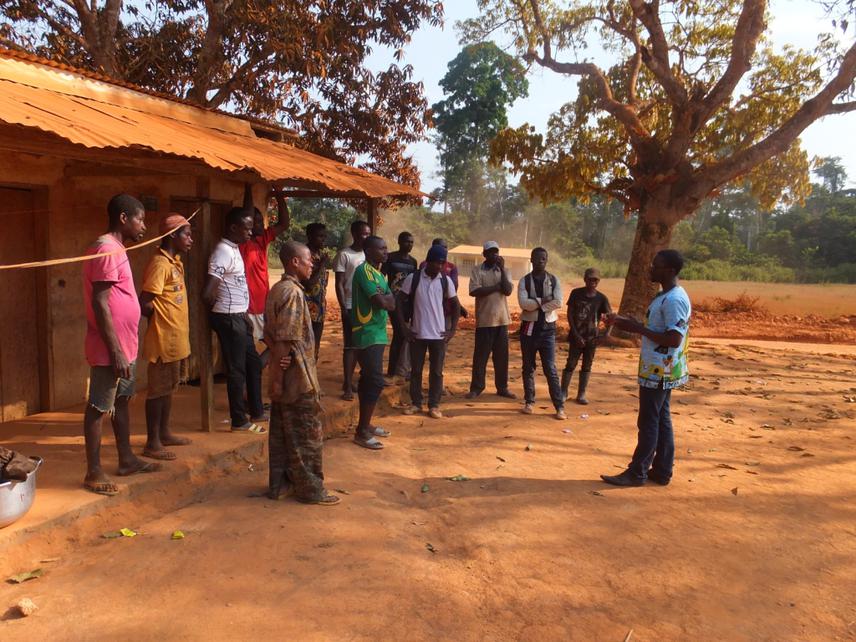Patrick Armel Mbosso
Project aimed to identify and delineate areas of high ecological and socio-cultural values in view of enhancing local capacity for responsible management and sound policy development.

Compass and GPS.
COPAL community forest is a tropical forest that covers 4800 ha and it’s managed by local people. Its resources are subject to many threats that can be grouped under over harvesting for their use or for trade and timber logging. Conflicts arose in the exploitation of this forest and the quest for a finite resource database instill the local people to request studies to be done on the high conservation values of interest to safeguard their cherished resources. Thus, assessment of high conservation values in the COPAL community forest is a project to evaluate resources and propose a sustainable resource use plan that takes in to consideration the various stakeholders within the forest zone under study. In a context where livelihood is directly linked to the forest, the survival of these local people is dependent on their environment.
This project will identify and delimit cultural, spiritual, concentrated zones of non-timber forest products as well as special zones of interest for fauna. It will map out biotopes based on the above criteria. In the realization of this work, it will be able to design and implement appropriate management options in order to preserve and even enhance key ecological and socio-economic values in this forest. By identifying and delineating areas in the basis of abundance of threatened species and cultural uses, priority sites for conservation intervention will be highlighted. Also, conflicts resulting from resource use will be addressed so as to prevent the negative impacts arising from forest use. By the end of the project, after the identification and delimitation of zones of interest, a management plan will be proposed to the team of managers of this forest in a bid to ensure rational and sustainable forest use. The issues will be the conservation of an area’s most valuable species, cultural heritage and identity, conservation of natural resources of importance to local communities, valuation of non-timber forest products and ecosystem services.
In addition, at the end of this project, there will be a transfer of project responsibilities and leadership to the local people. Capacity building and mentoring will take place to reinforce knowledge on conservation which is already at a micro level. This will assure transferability and more so, an HCV network for all community and council forests is a preoccupation which this project will move to its implantation.